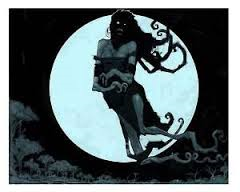
Halloween traditions can be traced back to the pre-Christian ancient Celtic festival of the dead. This is also known as the festival of Samhain, when nature appears to be dying down.
The Celtics were ancient Indo-European people and they reached their peak of Celtic influence and territorial expansion during the 4th century BC and it extended across the length of Europe from Britain to Asia.
The Celtics used a solar/lunar ritual calendar. They divided the calendar year into four major sections. These sections were called quarter days. They divided the quarter days in half, creating four cross-quarter days. Together, these made an eight-part year that reflected the natural procession of the seasons.
Halloween, October 31st is the first month of the Celtic year and is named Samonios, ‘Seed Fall’: in other words, from death and darkness springs life and light.
The Celtic calendar is presumably dates back from the 1st century BCE. It is made up of bronze fragments and was once a single huge plate. It is inscribed with Latin characters, but written in Gaulish, which is an ancient Celtic language that was spoken in parts of Europe as late as the Roman period.
During the 3rd and 4th century BC, the Celtic history began to decline and disintegrate with Julius Caesar’s conquest of Gaul. When this happened, the Celtic independence came to an end on the European continent. In Britain and Ireland this decline moved more slowly, but traditional culture was gradually eroded through the pressures of political subjugation. Despite the erosion of the Celtic culture, many of the holidays we celebrate today can be traced back to the Celtic calendar and traditions.


